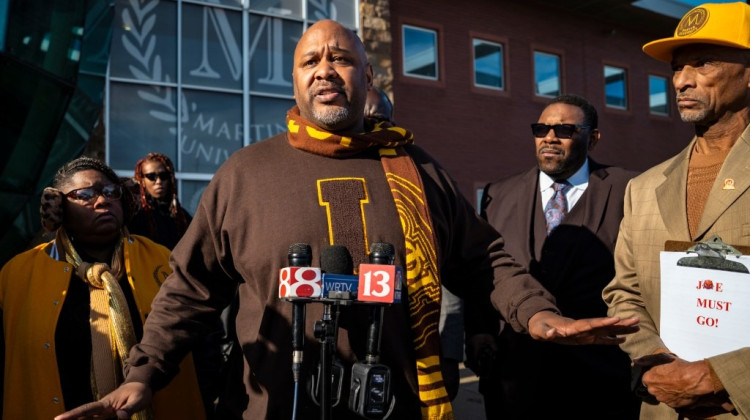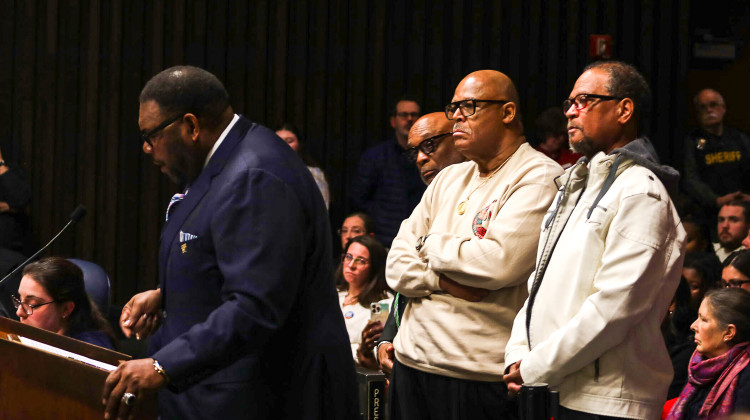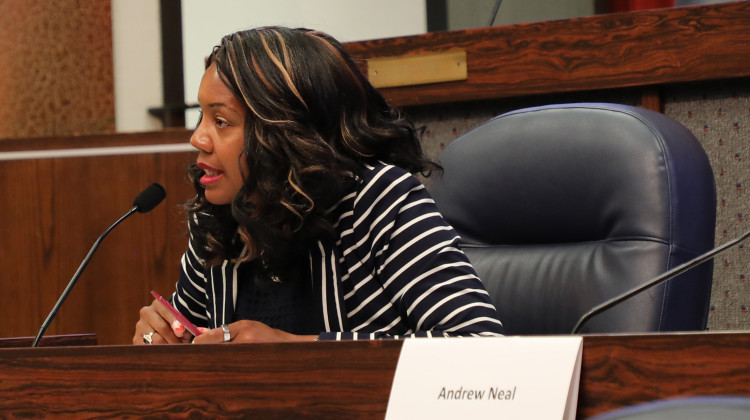
Indianapolis Public Schools has seven elected school board members — five reside in districts and represent specific neighborhood communities, and two are elected at-large.
Indianapolis Public Schools, WFYIThe Indianapolis Public Schools board of commissioners must redraw its electoral districts due to population shifts within the district boundary. This redistricting will impact which neighborhoods are represented by a specific school board seat in the 2024 election.
IPS has seven elected school board members — five reside in districts and represent specific neighborhood communities, and two are elected at-large. District boundaries must be drawn equally based on precinct, or voting district, lines. In order to comply with state law, the population of the largest district cannot exceed the smallest district by more than 5 percent.
Currently, District 5 — which is represented by Commissioner Taria Slack — is 21 percent larger than District 4 — where Commissioner Diane Arnold has served on the IPS board since January 2005.
District 5, which runs along the northwest side of the city to Interstate 465, has about 12,700 more residents than District 4, which includes the Near Westside and Near Southside and stretches south beyond Garfield Park. IPS Executive Director of Operations Zach Mulholland said this is similar to the redistricting issue IPS faced in 2010, when more population growth was seen in District 5.
No plans have been proposed yet, and they will not impact the upcoming November 2022 election, when three seats are up for election. The final plan, which must be approved by Dec. 31, will be implemented in 2023 in place for the 2024 election.
IPS officials will have more options to redraw districts than it did during the previous redistricting. This year Marion County added 21 precincts and changed some precinct boundaries.
Districts are required to reevaluate and, if needed, redo their redistricting process every 10 years — within a year after new census data is released. The Indiana General Assembly gave districts a one-year extension on the redistricting process due to the COVID-19 pandemic.
Legislation changes and process timeline
A recent change to state law allows at-large school board representatives to live anywhere within the school district. Previously, at-large members could not reside in the same district boundary. That means there could be up to three representatives from the same area – the district board member and the two at-large members.
Commissioners Slack and Evan Hawkins are concerned this change could impact whether future representatives will reflect the district’s student population, which was 40 percent Black and nearly 32 percent Hispanic as of the 2020-2021 school year.
“As population shifts occur — culture, ideology, etc. — it creates a dynamic where literally three people who live next to each other, door-to-door-to-door, have the ability to represent interests that are more homogeneous,” said Hawkins, who is also president of the board of commissioners.
In Indiana and across the country, local, state and federal lawmakers continue to battle with each other and courts over whether recent redistricting accurately reflects population changes and racial diversity.
IPS district boundary changes were previously approved by the Indiana Department of Education, but that requirement has been eliminated. Now school boards are responsible for designing the redistricting process. The IPS redistricting plan will be approved by Marion County’s election agency.
To start the process, IPS school board members were asked to review the suggested guiding principles for the redistricting process.
Hawkins and Mulholland will present a proposed redistricting plan to the board of commissioners in August.
Contact WFYI education reporter Elizabeth Gabriel at egabriel@wfyi.org. Follow on Twitter: @_elizabethgabs.
 DONATE
DONATE







 Support WFYI. We can't do it without you.
Support WFYI. We can't do it without you.